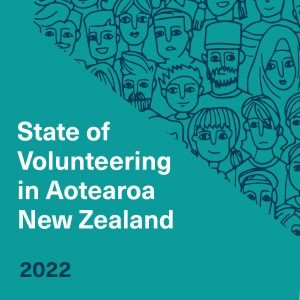Volunteers remain committed
Volunteers remain committed to their roles and to supporting their communities, the latest State of Volunteering report shows.
Despite the challenges to community organisations and volunteers from the Covid-19 pandemic, the state of volunteering in Aotearoa is generally healthy.
Over the past two years many people helped others in generous, collaborative and innovative ways.
The State of Volunteering in Aotearoa New Zealand 2022 report presents an overview of volunteering. It is informed by surveys from volunteers and volunteer managers with community organisations, focus groups and official statistics.
Volunteers told us contributing to the community was their key motivator (90%), while the opportunity to make friends or to join in volunteering with a friend was also important (34.6%). Volunteers’ intention to continue volunteering long-term remains strong, at 81%, similar to the pre-Covid percentage.
Covid-19 has put a spotlight on the community and voluntary sector – throwing up challenges for organisations and volunteers alike, while also highlighting its value to the wellbeing of New Zealanders.
“Volunteering needs to be well-managed and resourced in order to make the greatest contribution to society. We will continue to advocate for this,” Michelle Kitney, Chief Executive of Volunteering New Zealand says.
Key themes and findings
ONE: Barriers and Motivations for Volunteering
There are many reasons for people to volunteer, including having a drive for social justice or a lived experience of the charity’s cause. Volunteers want to be treated with dignity – and to treat those they serve in a dignified way. Volunteers will only commit to organisations that match their values. While many say there is an issue with ageing volunteers and a low interest from young people, youth themselves say organisations should consider why and how they could attract younger people.
TWO: Volunteering and whakawhaungatanga: relationships and connections
Many people volunteer because of the relationships and connections they make. The most common method of volunteer recruitment is via word of mouth EXCEPT for people under the age of 35 who found their role via a social media post or internet search. The human and social aspects of volunteering are often the most rewarding. When these ties were stretched or severed during the response to the Covid pandemic, some volunteers did not return.
THREE: The public, organisational and personal benefits of volunteering
Different groups describe volunteering in different ways. Organisations (particularly those with over 500 volunteers) use organisational and business metrics to measure their impact. Volunteers focus on the public benefits (i.e. giving back to the community) or personal benefits (i.e. making friends through volunteering).
FOUR: Recognising and valuing volunteers and volunteering
Volunteer organisations vary in how they recognise and value volunteers. The majority reimburse volunteers for their out-of-pocket expenses. Some organisations regularly nominate volunteers for awards and honours. Many volunteers prefer small gestures of thanks. Key stakeholders from the community and voluntary sector feel more could be done to value and recognise volunteering.
FIVE: The impact of Covid-19 and lessons
Covid-19 negatively impacted volunteering organisations and their ability to deliver services. This resulted in having to suspend volunteering programmes and loss of volunteers due to the vaccine mandates. Covid-19 reduced many organisations’ funding streams e.g. charity shops. Organisations with an electronic system for managing volunteers were better off than those without.
Covid-19 also adversely affected volunteers’ experience and even ability to volunteer. Volunteers over 65 years of age were twice as likely to report that concerns about Covid-19 had prevented them volunteering.
SIX: Diversity and inclusion in volunteering theory and practice
There are challenges in creating a diverse and inclusive volunteering workforce. Volunteers’ experiences of belonging did not correlate with an organisation having a diversity and inclusion strategy. However, some organisations were making inroads in this area.


